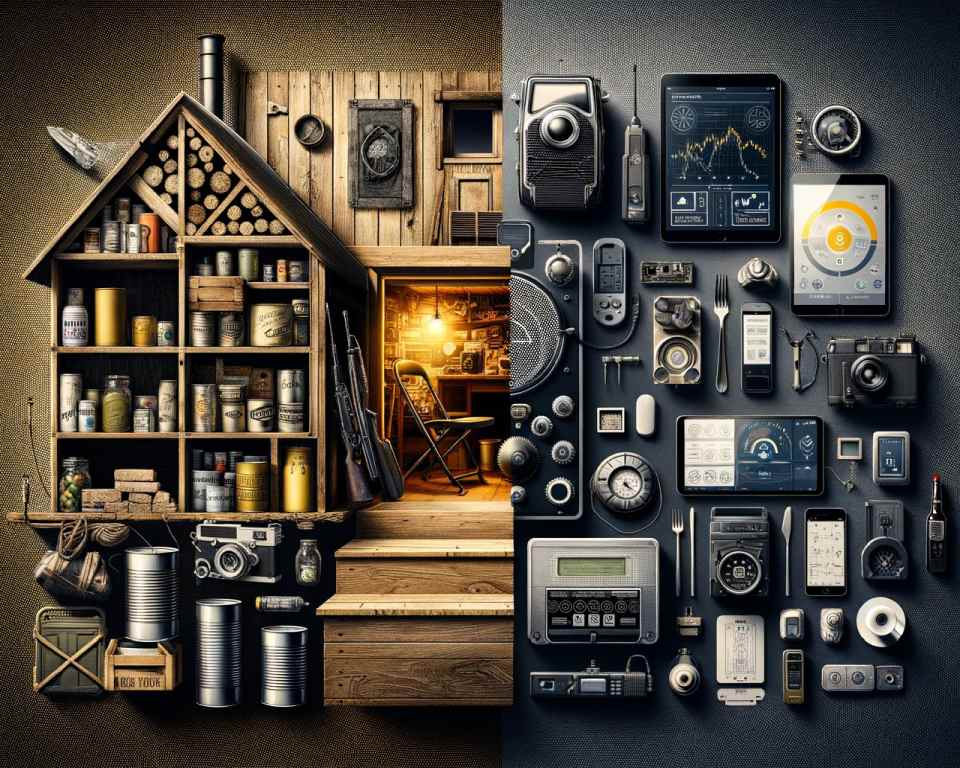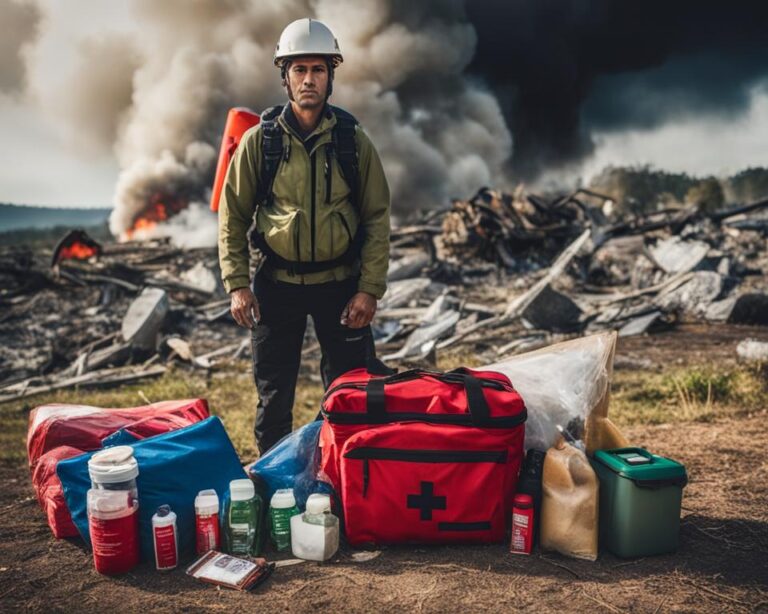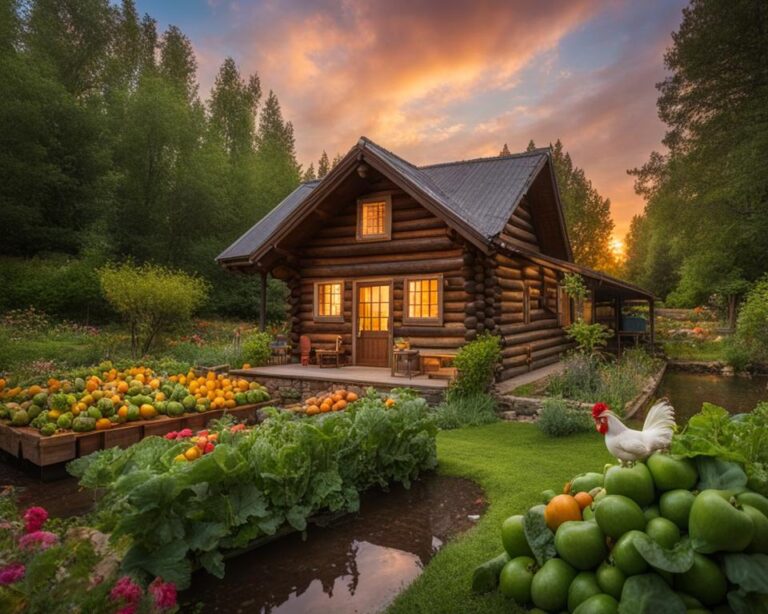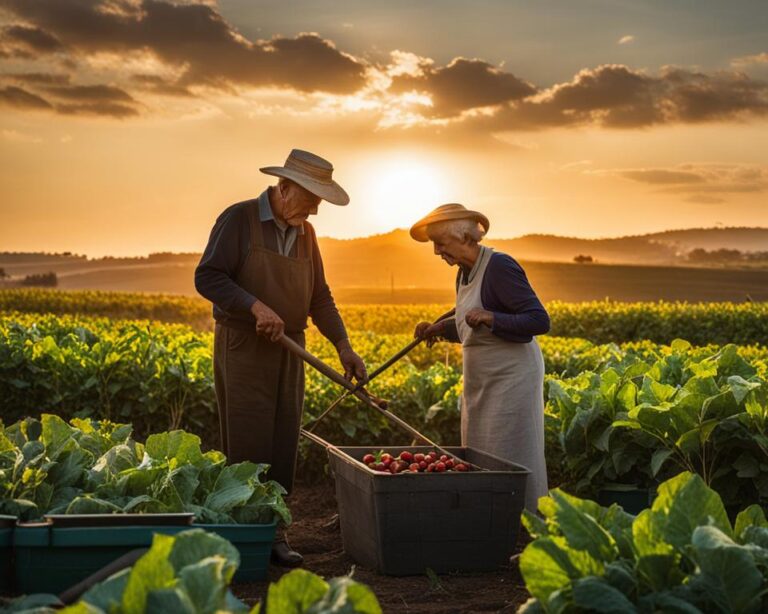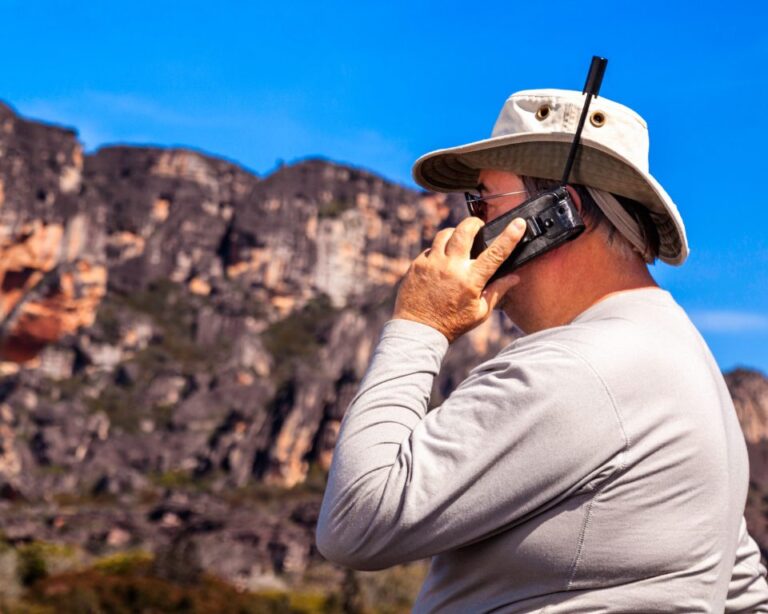The History of Prepping: From Survivalism to Modern Preparedness
The concept of prepping, or preparing for worst-case scenarios, has a long and fascinating history. From its survivalist roots to its evolution into modern preparedness efforts, prepping has emerged as a popular and important practice for individuals and communities alike.
The timeline of prepping can be traced back to significant events that highlighted the need for preparedness, such as the nuclear meltdown at Chernobyl and the September 11th terrorist attacks. These incidents sparked a realization that being prepared for emergencies is not just a fringe activity but a crucial aspect of personal and community safety.
Over the years, prepping has gained mainstream attention, with businesses specializing in emergency supplies and survival gear booming. More and more people are recognizing the importance of being ready for unforeseen circumstances, leading to a surge in interest in prepping and emergency preparedness.
Today, the prepping movement is diverse, with individuals ranging from those who maintain small emergency kits in their homes to others who have fully stocked bunkers. The emphasis is on being prepared for a wide range of scenarios, including natural disasters, pandemics, and economic downturns.
Key Takeaways:
- The history of prepping can be traced back to events such as the nuclear meltdown at Chernobyl and the September 11th terrorist attacks.
- Prepping has gained mainstream attention, with businesses booming and more people becoming interested in disaster preparedness.
- The prepping movement has become more diverse, with preppers ranging from individuals with small kits to those with fully stocked bunkers.
- Being prepared for emergencies is an important aspect of personal and community safety.
- The emphasis in prepping is on being prepared for a wide range of scenarios, including natural disasters, pandemics, and economic downturns.
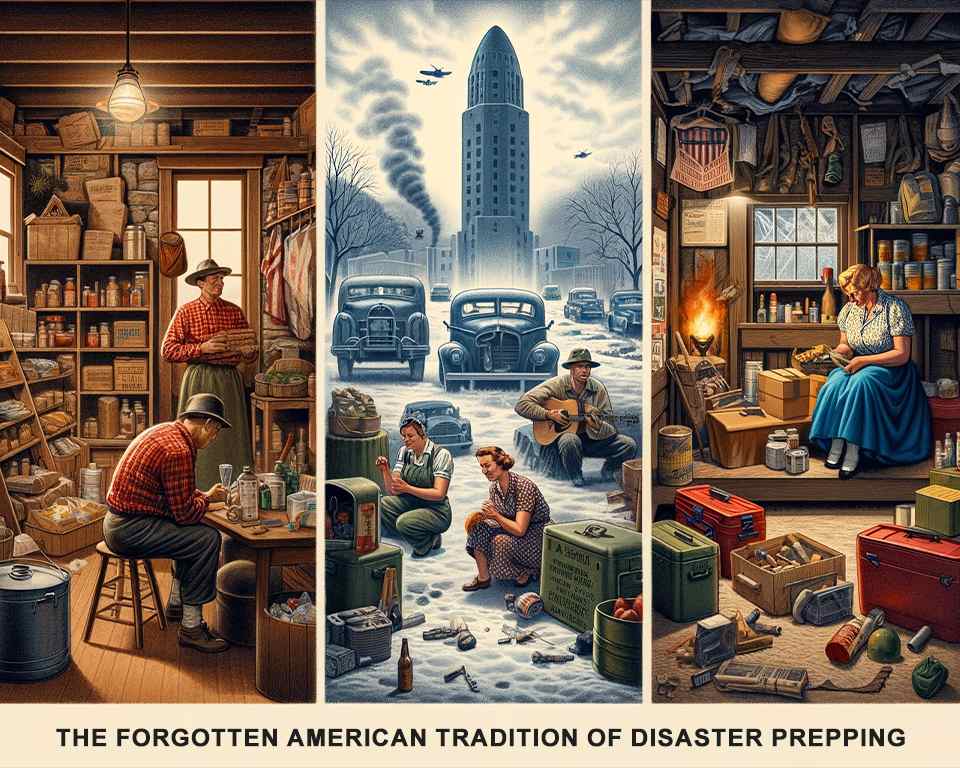
The Forgotten American Tradition of Disaster Prepping
Disaster prepping, or preparing for worst-case scenarios, has a rich history in the United States. From the Great Depression to the Cold War, Americans have recognized the importance of being prepared for emergencies. This tradition of disaster prepping is often overlooked but has played a significant role in shaping our nation.
During the Great Depression of the 1930s, the government implemented the New Deal, a series of programs aimed at boosting the economy and providing relief to Americans. As part of the New Deal, provisions for disaster preparedness were put in place to help citizens cope with the devastating effects of the economic crisis. This marked a turning point in how the government viewed the importance of readiness.
In response to the impending threat of World War II, the Office of Civilian Defense was established in 1941. Its mission was to prepare Americans for military attacks and natural disasters. Under the guidance of the Office of Civilian Defense, civil defense agencies were formed across the country, providing communities with guidelines and resources to ensure their preparedness.
The outbreak of the Cold War in the 1950s further emphasized the need for disaster preparedness. The Cuban Missile Crisis brought the threat of nuclear war dangerously close to American soil and served as a wake-up call for many. It became evident that preparedness was not just a matter of personal responsibility but a matter of national security.
However, as the focus shifted to federal clean-up efforts and the establishment of organizations like the Federal Emergency Management Agency (FEMA) in the following decades, the tradition of individual and community disaster prepping became somewhat forgotten. The government took on a larger role in disaster response, and the emphasis on prepping shifted.
“The history of disaster prepping in America reveals a pattern of the government’s involvement in promoting preparedness. From the New Deal era to Cold War initiatives, the recognition of the need for preparedness has been central to our nation’s resilience.”
Today, as the threat of natural disasters continues to loom and the impact of climate change becomes increasingly evident, there is a renewed interest in disaster prepping. The lessons from history remind us that being prepared is not only a personal responsibility but a way to ensure the survival and resilience of our communities.
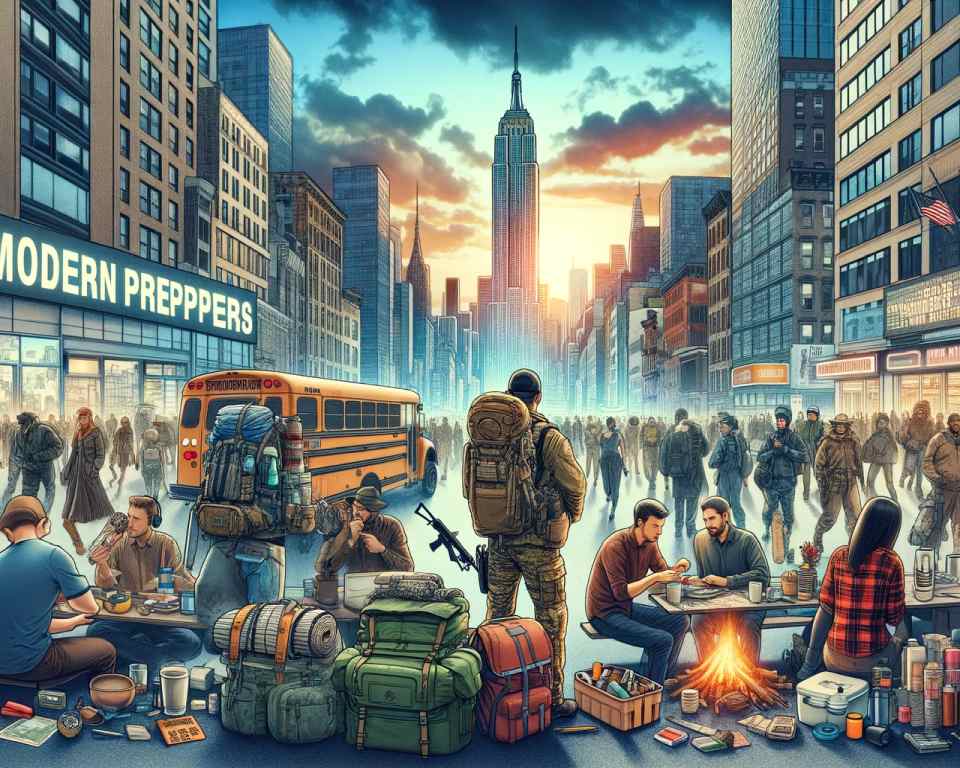
The Rise of Modern Preppers
Modern preppers have emerged as a diverse group with various reasons for preparing. We can see this diversity in communities like the New York City Preppers Network, which focuses on urban preparedness. Unlike the survivalist movement of the past, modern preppers have gained mainstream acceptance and are no longer seen as outliers.
One catalyst for the rise of prepping in recent years has been the impact of major events such as the pandemic and natural disasters. The COVID-19 pandemic, in particular, has highlighted the importance of being prepared for emergencies. As a result, more people have recognized the need to become self-reliant and resilient in the face of uncertain times.
Prepping has become a popular and thriving movement, with annual expos, survival schools, and conventions catering to the growing interest in preparedness. These events provide education, resources, and networking opportunities for preppers to connect with like-minded individuals and learn new skills.
It is worth noting that modern preppers distinguish themselves from the survivalist movement of the past. While survivalists tend to focus on extreme, self-reliant strategies for living off the grid, preppers adopt a more relaxed and adaptable approach to preparedness. Preppers prioritize building a stockpile of essential supplies, learning survival skills, and establishing a network of support within their communities.
Additionally, the surge in firearm sales in recent times can be attributed to both a sense of personal protection and a perception of prepping as a patriotic duty. The current political climate has fueled fears of social unrest and the need to be prepared for potential threats.
The image below illustrates the diverse nature of modern preppers and their dedication to preparedness:
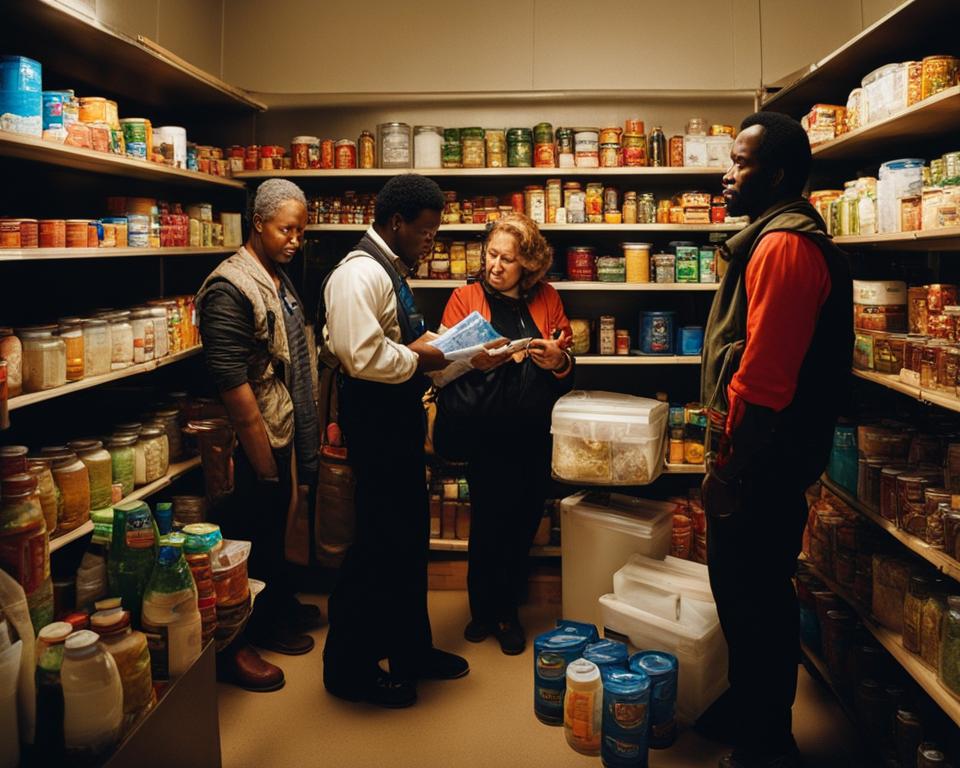
In conclusion, the rise of modern preppers signifies a shift towards proactive and practical approaches to preparedness in the face of uncertainties. The mainstream acceptance of prepping, the growth of prepper communities, and the surge in firearm sales all reflect the increasing interest in disaster preparedness. As more individuals recognize the importance of being self-sufficient and ready to face emergencies, prepping has become a necessary and responsible endeavor for many.
The Benefits of Disaster Prepping and Preparedness
Disaster prepping offers numerous benefits that can help individuals and families navigate through challenging times with confidence and peace of mind.
One of the immediate advantages of prepping is the ability to save money on groceries and other essential supplies. By stockpiling items such as non-perishable food, water, and toiletries, preppers can avoid price hikes during emergencies and ensure that they have an ample supply of necessities. This not only helps them save money in the long run but also provides a sense of security, knowing that they are well-prepared for unpredictable situations.
Prepping also plays a crucial role in protecting homes and belongings from disasters, such as fires and floods. By having emergency plans and supplies in place, preppers can mitigate potential damage and increase their chances of safeguarding their property. Whether it’s having fire extinguishers readily available or having evacuation routes planned, preparedness measures can make a significant difference in ensuring the safety of loved ones and cherished possessions.
Furthermore, being prepared enables individuals to stay healthy and safe during emergencies. By having essential medical supplies, such as first aid kits and medications, preppers can address minor injuries or illnesses without relying on immediate medical assistance. Additionally, prepping encourages the development of valuable skills like basic first aid, self-defense, and outdoor survival, enhancing self-sufficiency and adaptability during challenging times.
Another benefit of disaster prepping is its ability to help individuals stay calm and collected in the face of adversity. By knowing that they have the necessary supplies and knowledge to handle different situations, preppers can approach emergencies with a sense of confidence and resilience. This calmness can radiate to others around them, creating a more stable and collected environment for everyone involved.
Moreover, disaster prepping promotes self-sufficiency, which is invaluable, especially during times of economic uncertainty or collapse. By cultivating skills such as gardening, food preservation, and basic home repairs, preppers can become more self-reliant and reduce their dependence on external resources. This self-sufficiency not only provides a sense of empowerment but also ensures a higher level of resilience in the face of various challenges.
The benefits of disaster prepping extend beyond just the individual or family; they contribute to the overall well-being and security of communities. When individuals are equipped with the necessary supplies and skills, they can act as a resource to support and assist others in times of need, fostering a sense of unity and collective responsibility.
How Disaster Prepping Became a Mainstream Movement
Disaster prepping has undergone a remarkable transformation, transitioning from a niche survivalist activity to a mainstream movement in recent years. This rise in popularity can be attributed to several factors, including the increasing frequency and severity of natural disasters, memorable events such as the 9/11 attacks and the coronavirus pandemic, and the powerful influence of media representation.
The escalating occurrences of natural disasters, such as hurricanes, wildfires, and floods, have made people more conscious of the need for preparedness. The devastating impact of these calamities has served as a wake-up call, urging individuals to take proactive measures to protect themselves and their loved ones.
The 9/11 attacks were a seminal moment that profoundly affected the collective mindset. They highlighted the vulnerability of societies to unexpected threats and emphasized the importance of being prepared for any eventuality. This pivotal event sparked a shift in public consciousness, fostering a greater awareness of the need to be self-reliant and ready for emergencies.
The recent coronavirus pandemic propelled disaster prepping into the mainstream consciousness. The widespread disruption caused by the outbreak revealed the fragile nature of supply chains, the importance of maintaining essential resources, and the necessity of adapting to sudden changes. People witnessed firsthand the value of having stockpiles of food, water, and other necessities to endure extended periods of uncertainty.
Media plays a significant role in the popularization of disaster prepping. TV shows like Doomsday Preppers have captivated audiences, presenting the world of prepping in an accessible and entertaining manner. These programs have demystified prepping, showcasing its practicality and providing a platform for preppers to share their knowledge and experiences.
The trend of disaster prepping has gained rapid momentum, catching the interest of a wider audience. More individuals are recognizing the importance of being prepared for emergencies and are incorporating prepping practices into their lives. The prepping movement is no longer confined to a small group of survival enthusiasts; it has become a widely adopted approach to facing uncertain times.
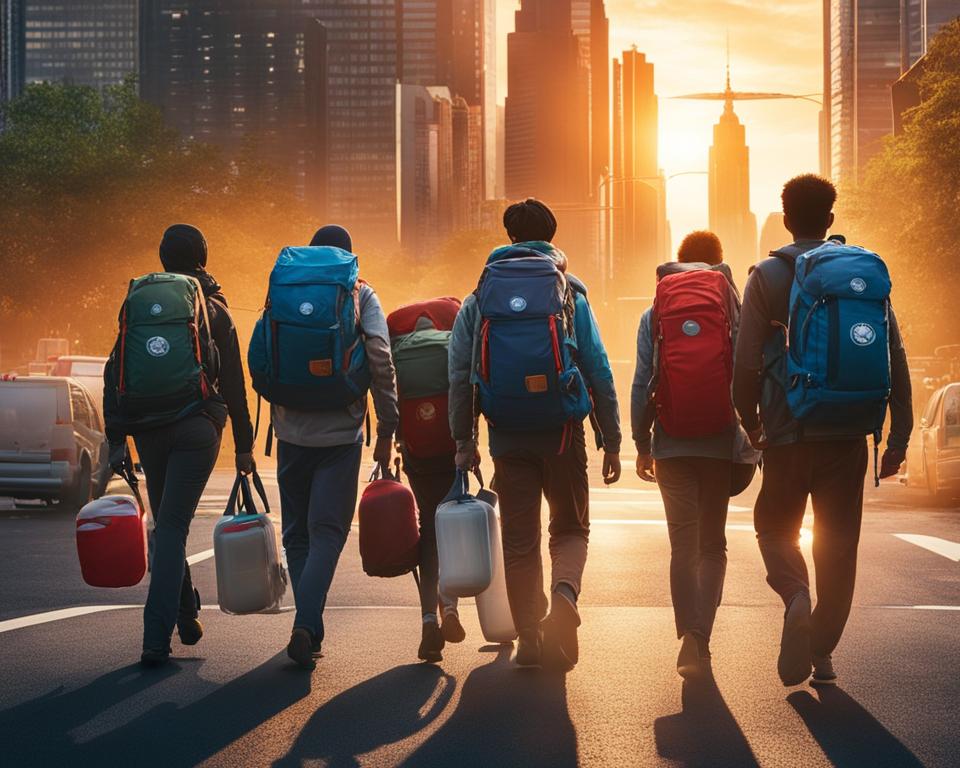
Overall, the rise of disaster prepping can be attributed to a combination of factors, including the increasing frequency and severity of natural disasters, significant events like the 9/11 attacks and the coronavirus pandemic, as well as media portrayals of preppers. As more people recognize the need to be prepared for various emergencies and disasters, the prepping movement continues to gain popularity and influence.
The Main Philosophies of the Disaster Prepping/Survivalist Movement
The disaster prepping/survivalist movement encompasses various philosophies that guide individuals in their preparedness efforts. Whether it’s a natural disaster, economic collapse, or societal unrest, preppers believe in taking proactive measures to protect themselves, their families, and their communities. Let’s explore some of the main philosophies that drive the disaster prepping movement.
Stockpiling Supplies: Ensuring Self-Sufficiency in Times of Crisis
One of the core philosophies of disaster prepping is stockpiling essential supplies. Preppers understand the importance of having enough food, water, medicine, and other necessities to sustain themselves during an emergency. By building up their stockpiles, preppers can avoid dependency on external resources and have peace of mind knowing they are prepared for any situation.
Learning Survival Skills: Equipping Oneself with Essential Knowledge
In addition to stockpiling supplies, preppers also prioritize learning survival skills. From gardening and hunting to first aid and self-defense, acquiring these skills helps preppers become more self-reliant. By knowing how to grow their own food, forage for resources, and protect themselves, preppers can thrive even in the most challenging circumstances.
“Learning survival skills is like having a toolbox that can help us overcome any obstacle in a disaster. It empowers us to take control of our own well-being and safety.” – John Richards, experienced prepper.
Preparing for Multiple Disasters: Recognizing the Diversity of Threats
The disaster prepping movement acknowledges that threats come in various forms. Whether it’s a natural disaster, pandemics, economic instability, or power grid failures, preppers believe in preparing for multiple scenarios. By considering a wide range of potential disasters, preppers ensure they are ready to face any challenge that comes their way.
Alternative Food Sources: Ensuring Long-Term Sustainability
Self-sustainability is a key aspect of disaster prepping, and alternative food sources play a crucial role. Preppers explore options such as gardening, raising livestock, and aquaponics to provide for their nutritional needs. By embracing alternative food sources, preppers can enhance their self-reliance and reduce dependence on traditional supply chains.
DIY Approach: Taking Control and Building Resilience
A DIY (Do-It-Yourself) approach is highly valued in the disaster prepping community. Preppers believe in taking control of their preparedness journey by making their own tools, equipment, and supplies. This hands-on approach not only helps preppers save money but also fosters a sense of resourcefulness and resilience.
Self-Sustainability Practices: Reducing Reliance on External Systems
Self-sustainability is a core principle of the disaster prepping movement. Preppers strive to become more self-sufficient by harnessing renewable energy, conserving resources, and developing independent living systems. By minimizing reliance on external systems, preppers ensure their ability to thrive even if societal infrastructures are compromised.
Embracing these philosophies, disaster preppers are committed to taking responsibility for their own well-being and the well-being of their loved ones. Through stockpiling supplies, learning essential skills, and promoting self-sustainability, preppers aim to build resilience and thrive in the face of adversity.

The Future of Disaster Prepping and its Popularity
When it comes to the future of disaster prepping, the outlook is bright. The market size for preparedness products and services is expected to grow significantly as more people recognize the importance of being ready for potential threats. This growing interest in disaster preparedness is driven by the increasing awareness of potential risks and the desire for self-sufficiency in times of crisis.
Online communities play a crucial role in the prepping movement. There are numerous websites, social media groups, and YouTube channels dedicated to providing information, resources, and support for preppers. These platforms allow individuals to connect with like-minded people, share tips and strategies, and stay updated on the latest developments in the field. The online presence of prepper communities has created a sense of community and a valuable exchange of knowledge among preppers.
Prepping is no longer limited to a specific demographic. People from all walks of life are embracing the importance of preparedness. A notable trend is the increasing number of women and liberal preppers joining the movement. This diversity brings fresh perspectives and ideas to the prepping community, broadening its reach and influence. The future of prepping is inclusive and adaptable, ensuring that individuals from all backgrounds can find relevant information and resources to help them prepare for any eventuality.
As the popularity of disaster prepping continues to grow, the field will evolve and adapt to changing circumstances. This includes the development of innovative products and services aimed at meeting the needs of preppers. Preppers can expect to see advancements in technology, improved communication channels, and more accessible and user-friendly resources. The future of disaster prepping is characterized by resilience, community, and a collective commitment to preparedness.

